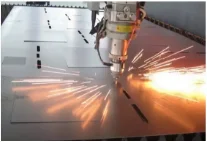Negative focus cutting on a laser cutter refers to setting the focal point of the laser beam below the surface of the material. This technique is often used to achieve certain effects, such as:
Wider kerf: The cut width (kerf) is wider because the laser beam diverges behind the focal point, which can be useful for specific design requirements.
Thicker materials: It can help cut thicker materials by ensuring that the laser beam has enough intensity deeper into the material.
Improved edge quality: In some cases, it can produce smoother edges.
To master the art of eliminating negative focus, follow these steps:
Know your machine: Understand the specifications and capabilities of your laser cutter, including maximum and minimum focal lengths.
Material considerations: Different materials react differently to laser cutting. Test with the specific material you will be using to determine the best setting.
Focus adjustment: Set the laser focal point below the surface of the material. The size of the negative focus depends on the thickness of the material and the desired cut quality.
Power and speed settings: Adjust the laser power and cutting speed to achieve the best results. Cutting thicker materials may require higher power, but it also increases the risk of burning or scorching.
Test and calibrate: Make test cuts to fine-tune focus, power, and speed settings. Use scrap material to avoid wasting valuable resources.
Software adjustments: Make sure your design software is configured correctly to account for wider cuts and any other effects of negative focus cutting.
Maintenance: Clean and maintain your laser cutter regularly to ensure consistent performance and cut quality.
By experimenting and adjusting these factors, you can achieve the best results for negative focus cutting on your laser cutter.

